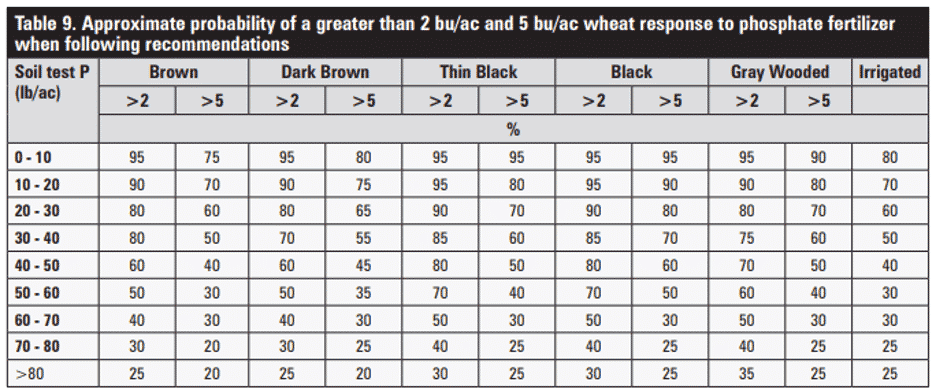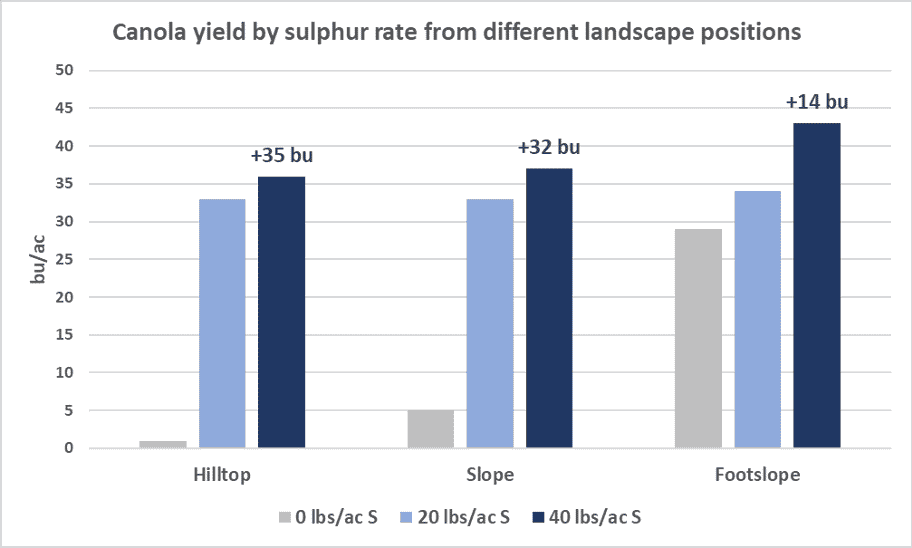What is Nutrient Responsiveness?
In follow up to Cory’s article “What is a fertility zone," I wanted to provide some thoughts on the term responsiveness. From a simple point of view, if I said, “this soil is likely responsive to copper," what I’m saying is there is a good chance, perhaps 75%, that an application of copper would result in a yield increase. If I said, “its highly unlikely to respond," there is a low probability that the addition of that nutrient will result in a yield increase. This is the way many universities or government bodies summarize research, such as the table below from the Alberta Ministry of Agriculture Agdex 542-3.

Simple enough, right? But where it gets complicated is when we start looking at all the factors that affect the responsiveness of a soil to any given nutrient, especially in the context of a SWAT MAP. One of the most powerful attributes of SWAT management zones is its ability to map variation in moisture, organic matter (both % and depth of topsoil), and relative mineralization rates. Some factors that affect responsiveness to added nutrients include:
Crop: Certain crops are more responsive to nutrients than others, such as boron in alfalfa, or zinc in corn. In the case of boron, its due to a dramatic difference in the amount of boron a crop like alfalfa requires vs. a crop like wheat (at least 25 ppm in alfalfa tissue vs. only 6 ppm in wheat). With other nutrients, it may be due to the crop roots ability to uptake a nutrient. Canola for example is very good at extracting zinc from the soil, thought to be largely due to a relatively acidic rhizosphere.
Water: All plants need some soil water to aid nutrient uptake, since nutrients rely on mass flow or osmosis to get to the root surface. Additionally, it’s now understood that potassium, for example, can get ‘trapped’ in clay layers under very dry conditions and become unavailable for plant uptake. So nutrient uptake is challenged under dry soil conditions. Should this affect how we fertilize? Does it mean we should strive for higher levels of some nutrients in the soil in relatively dry landscape positions?
Mineralization: A large percent of many nutrients are supplied to a crop by mineralization of organic matter. Sulphur is a good example of this, almost always most deficient in low organic matter soils, especially if sandy. One of the most consistent trends we see in soil test data is higher soil sulphate levels in lower landscape positions with higher organic matter, and more mineralization due to higher moisture. SWAT zone 1, the driest part of the field and often the zone with the lowest organic matter and mineralization rates, is almost always the most sulphur deficient part of the field. This has been documented in other research, such as data from Deibert et al. (1996):

Reference: Diebert, E.J., S. Halley, R.A. Utter, and J. Lukach. 1996. Canola response to sulfur fertilizer applications under different tillage and landscape positions. 1996 Annual Report to USDA/CSREES/Special Programs Northern Region Canola and North Dakota Oilseed Council.
In the above example, the hilltop had an incredible response to added sulphur - an additional 35 bu/ac. In fact, without added sulphur the canola yielded almost nothing, so it’s safe to say sulphur was the limiting factor! The higher yielding footslope also had a strong response, but not as high as the hilltop or midslope position. In this field, the ROI from 40 lbs of sulphate-S was better on the hilltop than the footslope, even though the footslope yielded more.
To summarize, there are many factors (including ones not mentioned here) that affect nutrient responsiveness. The soil and its physical, chemical, and biological characteristics drive nutrient responsiveness, not absolute yield. SWAT MAPS help agronomists better understand and map these soil characteristics that drive the responsiveness (and more importantly ROI) to applied nutrients.
Wes Anderson
Global Fertility Specialist - Croptimistic
wes@croprecords.com









